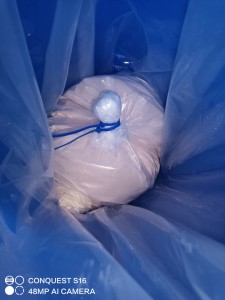Zirconium chloride, also known as zirconium(IV) chloride or ZrCl4, is a compound commonly used in a variety of industries and scientific research. It is a white crystalline solid with a molecular formula of ZrCl4 and a molecular weight of 233.09 g/mol. Zirconium chloride is highly reactive and has a wide range of applications, from catalysts and chemical synthesis to the production of ceramics and glasses. In this article, we will look at how zirconium chloride is made.
The synthesis of zirconium chloride involves the reaction between zirconium oxide or zirconium metal and hydrogen chloride. Zirconia (ZrO2) is commonly used as the starting material due to its availability and stability. The reaction can be carried out in the presence of a reducing agent such as carbon or hydrogen to promote the conversion of zirconium oxide into zirconium metal.
First, zirconia is mixed with a reducing agent and placed into a reaction vessel. Hydrogen chloride gas is then introduced into the reaction vessel, causing the reaction to occur. The reaction may be exothermic, meaning it releases heat, and should be carried out under controlled conditions to prevent any potential hazards. The reaction between zirconium oxide and hydrogen chloride is as follows:
ZrO2 + 4HCl → ZrCl4 + 2H2O
The reaction is usually carried out at high temperatures, usually between 400 and 600 degrees Celsius, to ensure complete conversion of zirconium oxide into zirconium chloride. The reaction proceeds until all zirconium oxide is completely converted to zirconium (IV) chloride and water.
Once the reaction is complete, the resulting mixture is cooled and the zirconium chloride is collected. However, zirconium chloride usually exists in a hydrated form, meaning it contains water molecules in its crystal structure. To obtain anhydrous zirconium chloride, hydrated zirconium chloride is usually heated or vacuum dried to remove water molecules.
The purity of zirconium chloride is critical for specific applications. Therefore, additional purification steps may be required to remove any impurities or moisture. Common purification techniques include sublimation, fractional crystallization, and distillation. These methods can extract high-purity zirconium chloride, which is critical for a variety of industries including electronics and nuclear applications.
To sum up, zirconium chloride is synthesized by the reaction of zirconium oxide and hydrogen chloride. This reaction requires controlled conditions and is usually carried out at high temperatures. The resulting zirconium chloride is usually obtained in a hydrated form, with additional steps required to obtain anhydrous zirconium chloride. Purification techniques can be employed to obtain pure zirconium chloride for specific applications. The production of zirconium chloride is an important process, making it widely used in various industries and scientific research.
Post time: Nov-10-2023
